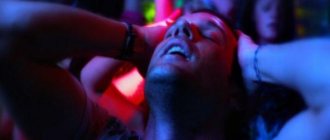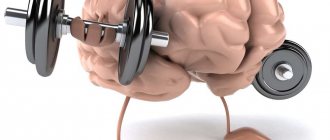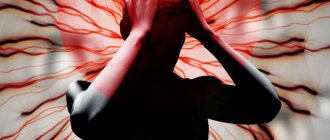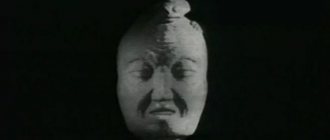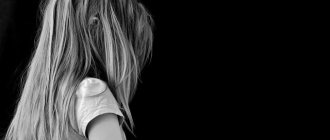Modern man faces stress and nervous tension every day. Moreover, every fifth resident of our country from time to time experiences a feeling of panic attack, suffocation and depression.
Neurasthenia is a mental disorder caused by nervous weakness. This is one of the most common diseases of the nervous system. Representatives of the fairer sex aged 25-50 are more prone to mental disorder.
Ignoring treatment for neurasthenia is fraught with consequences. We invite you to get acquainted with the main symptoms and signs of a mental disorder, as well as consider modern treatment options for nervous weakness.
What is neurasthenia?
Neurasthenia is a pathological state of the psyche. The disease becomes more active against the background of fatigue, prolonged nervous tension, depression, apathy, and weakness.
Diagnosis and treatment of the disease is carried out by a specialist – a psychotherapist. Each individual case is special. Therefore, at the stage of diagnosis and treatment, the help of a psychologist and therapist may be needed.
The emergence of a pathological state of the psyche is the first sign of depletion of the energy reserves of the central nervous system. Most often, neurasthenia develops against the background of:
- stressful situations - loss of a loved one, divorce, separation and prolonged conflicts;
- mental or physical stress;
- violation of the daily routine;
- insomnia;
- pregnancy.
Quite often, neurasthenia develops in women during the postpartum period. The regime of the fairer sex changes dramatically; hormonal changes occur in the body. In addition, a woman’s body is literally constantly under stress: lack of sleep, breastfeeding, fatigue - all these factors can cause the development of neurasthenia in women.
There are three stages of the disease:
- Hypersthenic neurasthenia. This form of the disease can be characterized by rapid excitability, irritability and sleep disturbance. As a result of sleep disturbances, performance decreases in the morning. The patient may become irritated by even the slightest noise.
- Irritable weakness. Irritable weakness is often expressed as a person's inability to control their emotions. And even if before the patient was not whiny and rarely showed emotions, then with irritable weakness it becomes increasingly easier to bring him to emotions. Against the background of irritable weakness, active attention is also upset.
- Hyposthenic neurasthenia. Accompanied by exhaustion, physical weakness, and inability to control one’s emotional state. The background mood is very alarming. Mood is changeable - from a bad mood to a good one it can take a few minutes.
According to the results of the study, young people who lead an active lifestyle - engaged in mental work or social activities - are prone to the disease. According to psychotherapists in the early stages of the development of the disease, signs of neurasthenia can be eliminated in a very short time, and with minimal losses to the patient’s health. Now you know what neurasthenia is.
Relief of symptoms of neurasthenia in general medical practice
The problem of asthenic conditions, both in clinical and therapeutic aspects, is one of the most difficult in the work of any doctor.
In the International Classification of Diseases of the 10th revision, conditions, the main manifestation of which is asthenia, are considered under the headings “Neurasthenia F48.0”, “Organic emotionally labile (asthenic) disorder F06.6”, “Fatigue syndrome after viral infection G93.3” . Other asthenic disorders identified in the classification include: nonspecific asthenia (R53), burnout syndrome (Z73.0), post-viral asthenia syndrome (G93.3) and psychasthenia (F48.8).
The incidence of this pathology is quite high and ranges in general medical practice from 15% to 57% [1, 2]. According to the World Health Organization (WHO), the prevalence of only one type of asthenic disorder - neurasthenia - among patients in general medical practice averaged from 1.3% to 5.2%. No less significant were the consequences of neurasthenia associated with social maladjustment, which in a study by the World Health Organization reached 7–8 days per month.
Clinically, asthenic symptoms, being the least specific of all mental disorders, are considered by some authors as “basic” in other disorders, sometimes preceding or determining and almost always completing the course of any disease [3].
Neurasthenia is manifested by increased fatigue, as well as irritable weakness (increased excitability can be replaced by tearfulness or remorse), unstable mood, hyperesthesia (intolerance to bright light, loud sounds, strong odors). Headaches, sleep disorders in the form of constant drowsiness or persistent insomnia, and autonomic disorders are often observed. Patients experience a change in mental state depending on atmospheric pressure. Determinants of asthenia are constant complaints of exhaustion after minimal effort in combination with at least two of the listed complaints: muscle pain, dizziness, tension headaches, sleep disturbances, inability to relax, irritability, dyspepsia.
Modern scientific ideas suggest a polyetiological nature of asthenic disorders involving a variety of neurochemical systems, the impact of which can lead to a decrease in the severity of psychopathological symptoms.
The wide variety of pathogenetic mechanisms for the development of neurasthenic conditions contributes to the formation of different approaches to treatment and the use of drugs of different classes (psychostimulants, nootropics, antidepressants, tranquilizers, etc.), which do not always effectively affect different registers of asthenic symptoms. Many drugs (benzodiazepine tranquilizers, antidepressants with sedative effects, anticonvulsants and antipsychotics, barbiturate-containing drugs, Valocordin, Corvalol), on the contrary, can cause a feeling of fatigue at the beginning of treatment, with prolonged use, in case of their accumulation or in case of overdose [4].
Today in general medical practice, the most frequently prescribed drugs for the treatment of asthenia are nootropic drugs, which carry out a targeted pharmacological effect on cognitive functions and manifestations of mental and neurological deficits due to the activating specific effect on the higher integrative functions of the brain [1]. However, as the experience of practical doctors shows, their outpatient use is not always effective and justified [2].
In addition, the literature provides evidence that vitamin supplements can improve mood and cognitive function even in the absence of vitamin deficiency [5]. A number of researchers who have identified a deficiency of antioxidants, L-carnitine, B vitamins, and magnesium in psychopathological disorders believe that the addition of drugs containing these nutrients can reduce symptoms of depression, asthenia, anxiety, and cognitive disorders [5–7].
At the same time, there is not enough information about the effectiveness and safety of using combined (nootropics, neurotrophs and multivitamin complexes) treatment for neurasthenia.
The purpose of the pilot comparative study was to study the therapeutic effectiveness and tolerability of complex therapy for neurasthenia using a broad-spectrum nootropic drug and a multivitamin complex as an adjuvant (additional) agent.
Materials and methods
The study included patients of both sexes over the age of 18 years, meeting the criteria for neurasthenia according to ICD-10, who sought specialized help in the outpatient department of the city clinical hospital named after. M.E. Zhadkevich and the International Institute of Psychosomatic Health, who had not received psychotropic therapy over the previous 6 months and gave informed consent to participate in the study.
The study did not include patients with mental disorders that did not meet the inclusion criteria, pregnant and lactating women, as well as patients with severe and/or decompensated somatoneurological diseases at the time of treatment.
To exclude anxious or depressive genesis of psychopathological symptoms, the Hospital Anxiety and Depression Questionnaire (HADS) was additionally used at the screening visit.
In order to reduce the likelihood of the presence and/or influence on the mental state of latent, manifesting or decompensated concomitant somatic, neurological and endocrinological pathology, the age limit for participation in the study was limited to 40 years.
The main diagnostic method was clinical-psychopathological using data from psychometric studies (visual analog scale (VAS), Clinical Global Impression (CGI) scale) to assess the dynamics of the condition during therapy. The conclusion about the somatic condition of the patients was made on the basis of medical documentation, routine laboratory and instrumental examination methods using, if indicated, high-tech diagnostic studies (magnetic resonance imaging, computed tomography, Dopplerography, scintiography, etc.).
Of the patients included in the study, two groups of 30 people each were formed. Treatment of neurasthenia was carried out with a neurotrophic drug with a wide range of psychotropic activity established in studies - D, L-racemate of hopantenic acid (600 mg/day) [1, 8–13]. At the same time, in the main group, the Berocca® Plus multivitamin complex (1 soluble tablet/day) was prescribed as an adjuvant, consisting of vitamins and microelements, which have also proven themselves in a number of studies as substances with certain antiasthenic, procognitive, anxiolytic and thymoleptic effects [ 7, 14, 15–29]. In the comparison group, patients received monotherapy with D,L-racemate of hopantenic acid (600 mg/day). The duration of therapy was 1 month (30 days).
The effectiveness of therapy was assessed at scheduled visits: W (week) 0, W1, W2, W3, W4 (day 30) according to the VAS scale, CGI.
To determine the dynamics of cognitive impairment, a battery of tests was used: verbal fluency, Stroop, associative series.
The safety and tolerability of therapy were assessed based on spontaneous complaints from the patient and data from clinical and paraclinical somatic studies, which included recording heart rate, systolic and diastolic blood pressure in the supine and standing position, orthostatic test, clinical and biochemical blood tests, standard 12-channel electrocardiography in peace.
Additionally, adherence to therapy was assessed in terms of adherence to the regimen and dosage of medications.
The resulting material was processed using the Statistica program (StatSoft Inc., USA). The significance of differences was calculated using the Kolmogorov–Smirnov test.
Research results
The study included 60 patients (30 each in the main and control groups).
The average age of patients in the main group was 41.2 ± 2.3 years, in the control group - 42.5 ± 2.1 years. The average duration of the neurasthenic state was 2.3 ± 0.5 and 2.8 ± 0.4 months, respectively.
Comparable sociodemographic (gender, average age) and clinical-dynamic (duration of the disease, number of hospitalizations) characteristics of patients in both groups (Table 1) allow us to count on the validity of the results obtained.
The clinical picture of neurasthenia that developed against the background of psycho-emotional stress (protracted conflict in the family, emergency work schedule, etc.) was characterized by increased psychomotor fatigue, weakness in the body after minimal physical effort or mental work, decreased concentration of attention, the speed of associative processes, unpleasant ( pain, tension) sensations in the muscles combined with a decrease in professional productivity. Patients were also concerned about feelings of dizziness, dyspepsia, irritability, decreased feelings of pleasure, and episodic anxiety about familiar everyday events or relationships. Sleep disturbances were unstable (hypo-, hypersomnia), periodic and short-term.
The reduction of neurasthenic symptoms on the VAS scale in both groups reached statistically significant values by the end of the second week of therapy (p < 0.001) and subsequently became more pronounced with continuous improvement in indicators up to D30. However, starting from the first week of treatment, the positive dynamics of the condition of patients taking, along with D,L-racemate of hopantenic acid, a multivitamin complex, statistically significantly (p < 0.001) exceeded that in the comparison group (Table 2, Fig. 1).
As can be seen from the data in table. 2, while taking combination therapy in the main group, the greatest reduction in symptoms, superior to that in the control group, was recorded in the indicators “fatigue”, “weakness”, “discomfort in the body”, “anxiety” and “sleep disturbances”.
Similar dynamics were noted when analyzing changes in the average score on the CGI-S scale. In the main group, a statistically significant decrease in the severity of neurasthenic symptoms was recorded by the doctor in the first week, while in the control group - in the second week of therapy. By the end of the study, the rate of reduction in the severity of the patient’s condition in the main group was significantly higher than that in the control group (63.7% vs 56.6%, respectively, p < 0.05).
Particular attention should be paid to the positive effect of adjuvant therapy with a multivitamin complex on the indicators of cognitive functions impaired in patients with neurasthenia. The data obtained during the study indicate a significantly more pronounced positive effect of therapy using Berocca® Plus (Fig. 2, 3).
Treatment was well tolerated in both groups. There were no drug-related adverse drug reactions (ADRs) leading to premature discontinuation of therapy. All ADRs were transient and/or dose-dependent. Cancellation of therapy was not accompanied by the development of signs of withdrawal syndrome (physical discomfort, headaches and muscle pain, irritability, sleep disturbances, increased anxiety). At the same time, the spectrum of NLRs in the groups differed (Table 3).
Based on the data presented in table. 3, it can be noted that additional intake of a multivitamin complex reduced the likelihood of the occurrence of such ADRs of D,L-racemate of hopantenic acid, such as headache, difficulty falling asleep and increased blood pressure.
Conclusion
In the course of a pilot comparative study, reliable data were obtained that the inclusion of the multivitamin complex Berocca® Plus (1 soluble tablet per day) in a 30-day complex therapy for neurasthenia with D, L-racemate of hopantenic acid statistically significantly helps to reduce the severity of psychopathological symptoms.
The effect of the drug is realized, among other things, by improving the cognitive functions of patients, reducing fatigue, unpleasant (pain, tension) sensations in the body, anxiety, sleep disturbances and leveling the adverse reactions of the neurotrophic drug.
Increasing the effectiveness and tolerability of antineurasthenic therapy in the future will allow achieving a more significant improvement in the quality of life of patients.
Thus, the drug Berocca® Plus can be recommended as an adjuvant agent in the treatment of neurasthenia with modern neurotrophs.
Literature
- Kanaeva L. S., Vazagaeva T. I., Yastrebova V. V. Prospects for the use of the drug Pantogam active® in patients with asthenic disorders // Psychiatry and psychopharmacotherapy named after. P. B. Gannushkina. 2009. No. 6.
- Putilina M.V. Features of the treatment of asthenic disorders // Neurology and Rheumatology. 2010. No. 1.
- Pizova N.V. Clinic, diagnosis and treatment of chronic fatigue syndrome // Medical Council. 2015. No. 2. pp. 48–52.
- Veltishchev D. Yu. Past and present diagnosis of neurasthenia // Psychiatry and psychopharmacotherapy named after. P. B. Gannushkina. 2013. No. 1.
- Durga J., van Boxtel MPJ, Schouten EG, Kok FJ, Jolles J., Katan MB, Verhoef P. Effect of 3-year folic acid supplementation on cognitive function in older adults in the FACIT trial: a randomized, double blind, controlled trial // Lancet. 2007. No. 369. R. 208–216.
- Carroll D., Ring Ch., Suter M., Willemsen G. The effects of an oral multivitamin combination with calcium, magnesium, and zinc on psychological well-being in healthy young male volunteers: a double-blind placebo-controlled trial // Psychopharmacology. 2000. No. 150. P. 220–225.
- Scholey A., Bauer I., Neale Ch., Savage K., Camfield D., White D., Maggini S., Pipingas A., Stough C., Hughes M. Acute Effects of Different Multivitamin Mineral Preparations with and without Guaraná on Mood, Cognitive Performance and Functional Brain Activation // Nutrients. 2013. No. 5. P. 3589–3604.
- Kovalev G.I., Starikova N.A. Pantogam active: mechanism of pharmacological action // RMJ. 2010. No. 21. P. 2–4.
- Kontsevoy V. A., Rotshtein V. G., Bogdan M. N. et al. Pantogam in everyday psychiatric practice // Journal of Neurology and Psychiatry named after. S. S. Korsakova. 2007. No. 12.
- Medvedev V. E. New possibilities for the treatment of asthenic disorders in psychiatric, neurological and somatic practice // Psychiatry and psychopharmacotherapy. 2013. No. 4. pp. 53–59.
- Medvedev V. E. Mental disorders in patients with cardiovascular diseases: possibilities of preventive and relief therapy with nootropic drugs // CardioSomatica. 2012. No. 1. pp. 22–28.
- Medvedev V. E., Zverev K. V., Epifanov A. V. et al. Possibilities of nootropic therapy for borderline mental disorders in patients who have suffered acute coronary syndrome in a cardiology hospital // Archives of Internal Medicine. 2013. No. 1. P. 40–48.
- Medvedev V. E. Nootropic drugs and neuroprotectors in the treatment of mental disorders (textbook). M., 2015. 152 p.
- Medvedev V. E. Prerequisites for the use of vitamin complexes in the adjuvant therapy of mental disorders // Treating Physician. 2015. No. 9.
- Institute of Medicine (IOM). Reference Intakes for Thiamin, Riboflavin, Niacin, Vitamin B6, Folate, Vitamin B12, Pantothenic Acid, Biotin, and Choline; National Academy Press: Washington, DC, USA, 1998.
- Institute of Medicine (IOM). Dietary Reference Intakes for Vitamin C, Vitamin E, Selenium and Carotenoids; National Academy Press: Washington, DC, USA, 2000.
- Harris E., Kirk J., Rowsell R., Vitetta, L., Sali A., Scholey AB, Pipingas A. The effect of multivitamin supplementation on mood and stress in healthy older men // Hum. Psychopharmacol. Clin. Exp. 2011. No. 26. R. 560–567.
- Haskell CF, Robertson B., Jones E., Forster J., Jones R., Wilde A., Maggini S., Kennedy DO Effects of a multi-Vitamin/mineral supplement on cognitive function and fatigue during extended multi-Tasking // Hum. Psychopharmacol. Clin. 2010. No. 25. R. 448–461.
- Kennedy DO, Haskell CF Vitamins and cognition: What is the evidence? // Drugs. 2011. No. 71. P. 1957–1971.
- Kennedy DO, Veasey R., Watson A., Dodd F., Jones E., Maggini S., Haskell CF Effects of high-dose B vitamin complex with vitamin C and minerals on subjective mood and performance in healthy males // Psychopharmacology. 2010, 211. P. 55–68.
- Kennedy DO, Veasey RC, Watson AW, Dodd FL, Jones EK, Tiplady B., Haskell CF Vitamins and psychological functioning: A mobile phone assessment of the effects of a B vitamin complex, vitamin C and minerals on cognitive performance and subjective mood and energy //Hum. Psychopharmacol. Clin. Exp. 2011. No. 26. P. 538–547.
- Mattson MP, Shea TB Folate and homocysteine metabolism in neural plasticity and neurodegenerative disorders // Trends Neurosci. 2003. No. 26. P. 137–146.
- McGarel C., Pentieva K., Strain JJ, McNulty H. Emerging roles for folate and related B-vitamins in brain health across the lifecycle // Proc Nutr Soc. 2015 Feb. 74(1). P. 46–55.
- Nelson MV, Bailie G. A survey of pharmacists recommendations for food supplements in the USA and UK // J Clin Pharm Ther. 1990. No. 15. P. 131–139.
- Popovic IC Associations neurotropes de vitamines et de sels mineraux dans la therapeutique anti-stress // Schweizer Zeitschr Ganzheits Med. 1993. No. 3. P. 140–143.
- Ranelli PL, Dickerson RN, White KG Use of vitamin and mineral supplements by pharmacy students // Am J Hosp Pharm. 1993. No. 50. P. 674–678.
- Rosenberg IH, Miller JW Nutritional factors in physical and cognitive functions of elderly people // Am. J. Clin. Nutr. 1992. No. 55. S. 1237–1243.
- Selishchev GS, Petchot-Bacque JP., Volkov AK, Bolotina SI, Vein AM, Suter M., Sudakov KV, Alleaume B., Shmyriov VI An open non-comparative study on the efficacy of an oral multivitamin combination containing calcium and magnesium on persons permanently exposed to occupational stress-predisposing factors // J Clin Res. 1998. No. 1. P. 303–315.
- Sobal J., Daly MP Vitamin/mineral supplement use among general practice patients in the United Kingdom // Fam Pract. 1990. No. 7. P. 181–183.
R. A. Kardashyan*, Doctor of Medical Sciences, Professor O. R. Dobrushina**, Candidate of Medical Sciences V. E. Medvedev*, 1, Candidate of Medical Sciences
* FSBEI HPE RUDN University, Moscow ** International Institute of Psychosomatic Health, Moscow
1 Contact information
Symptoms of neurasthenia
The main symptom of the disease is severe headache. Moreover, this pain is more like pressure, and can occur only in one part of the brain hemisphere. The headache is diffuse. Often occurs in the evening or closer to bedtime.
The second common symptom is dizziness and malaise. Dizziness occurs due to changes in weather, during intense physical exertion, as well as fatigue.
Symptoms of neurasthenia:
- irritability for no reason;
- severe fatigue (even if the person did not perform physical work);
- lack of appetite;
- disruption of the gastrointestinal tract;
- easy excitability;
- decreased libido;
- decreased performance.
The patient loses his temper easily. He is not shy about showing his emotions to others - he can easily raise his voice, and in some cases, use physical force.
Types of neurasthenia
According to the International Classification of Diseases, 10th revision (ICD-10), types of neurasthenia are represented by two types.
The first type is increased fatigue after mental work. A person complains that he is doing worse at work or in everyday activities due to distracting associations, memories, and problems with attention. Mental exhaustion is more pronounced.
The second type is general weakness after minor physical activity (not going to the gym, but something ordinary) with a feeling of pain in the muscles. The person also says that he cannot relax.
In other classifications, there are hypersthenic and hyposthenic neurasthenia - these are rather phases (stages) of the disorder, which will be discussed further.
Signs of neurasthenia
The disease manifests itself in the form of changes and inadequate reactions to life situations. At the beginning of the development of neurasthenia, a person experiences a feeling of deep anxiety. He experiences anxiety because life “throws” difficult life situations at him, which, due to his exhaustion and depressed state, he cannot cope with.
Any, even the most insignificant life situation can provoke a depressed state, as well as a reluctance to independently choose from the “case of life’s problems.” A person becomes more and more withdrawn, he gradually falls out of society. Each patient reacts differently to life situations.
At the beginning of the development of neurasthenia, the patient experiences nervous breakdowns. The human nervous system is not yet too exhausted, so neurasthenia is accompanied by a surge of aggression. A person can argue for a long time and defend his opinion.
Over time, a person’s state of asthenia intensifies: it becomes more and more difficult for him to concentrate on small details, he does not enter into dialogues, his performance decreases, and fatigue increases. A person constantly wants to sleep.
In the vast majority of cases, hypochondria develops against the background of neurasthenia. Hypochondria is accompanied by:
- chills all over the body;
- feeling of pain in the musculoskeletal system;
- lack of appetite;
- heaviness in various parts of the body.
Typical signs of neurasthenia are irritability, aggression, and loss of vital energy. An accurate diagnosis can only be made by a psychotherapist after a complete examination of the patient.
Diagnosis of the disease does not cause any difficulties. The diagnosis is based on the main symptoms. Before a psychotherapist makes a diagnosis of “neurasthenia,” the specialist must exclude an organic disease of the central nervous system.
Possible complications
Untimely treatment of asthenoneurotic syndrome leads to serious complications. These include depression, diseases of the nervous system, and various brain lesions. In addition, chronic depletion of the nervous system causes strokes and heart attacks.
A depressed state of mind negatively affects the functioning of the entire body. The longer a patient avoids treatment, the greater the harm to health. The gastrointestinal tract suffers.
Due to a mental disorder, gastritis occurs, and subsequently an ulcer. Metabolism is disrupted, hormonal disruptions occur. In some cases, untimely treatment of neurasthenia in men and women provokes the growth of tumors.
A form of complication of asthenoneurotic syndrome is hand tremors, impaired coordination of movements, and organic brain damage. Therefore, the disease cannot be started.
Treatment of neurasthenia
So, the clinical picture of neurasthenia includes both mental and physical abnormalities. The concept of mental disorders often has different meanings.
Weakness, decreased performance, depression, vegetative dystonia - this is a small part of the consequences of neurosis. That is why at the first signs of neurasthenia you should definitely visit a specialist’s office.
Many people confuse neurasthenia with ordinary fatigue. Any deviations from the norm are already a reason to seek help from the clinic. Only qualified specialists can help restore normal functioning of the central nervous system. Treatment of neurasthenia is the first step on the path to recovery.
Consequences of neurasthenia
Untimely or incorrect provision of assistance for neurasthenia can result in unpleasant consequences:
- exacerbation of chronic ailments: the emotional state directly affects the physical state, persistent increases in blood pressure, tachycardia, arrhythmia, neuralgia, gastrointestinal diseases, etc. may appear;
- difficulties at work and in personal life: irritability, difficulties with concentration and performance can spoil relationships in the work team and negate work achievements and successes, interfere with career growth, building interpersonal relationships;
- high risk of developing phobias, obsessive-compulsive disorders, anxiety, obsessive states, etc.
This is why it is so important to get mental health help in a timely manner.
How to treat neurasthenia?
When visiting a psychotherapist, the specialist must first assess the form of neurasthenia. In the first block of the article, we have already introduced the main forms of mental disorders. The psychotherapist will make a diagnosis without much difficulty.
At the diagnostic stage, a detailed survey of the patient is carried out regarding complaints. The psychotherapist examines the visitor's medical history. Please note that neurosis can be part of inflammatory, infectious and somatic diseases. Therefore, only after a thorough examination can a specialist proceed to “active” actions.
The specialist sets a single goal - to identify the etiological factor. If the psychotherapist can find the etiological factor, then, most likely, the patient will forget about the disease in the shortest possible time. Treatment of mental disorder is extremely comprehensive. And includes:
- taking vitamin complexes;
- reduction of mental and physical stress;
- daily walks in the fresh air;
- development of the “correct” menu;
- autogenic training;
- sessions with a psychologist;
- drug therapy.
The selection of medications should be made by a psychotherapist. Do not forget to inform about the characteristics of your body: the presence of individual intolerance to components, genetic predisposition to central nervous system diseases, etc.
Why does neurasthenia occur?
Most often, the disorder occurs as a result of a combination of mental trauma and disproportionate stress - emotional, intellectual, physical. The main factors provoking neurasthenia are considered to be lack of sleep or rest, intoxication, including alcohol, drugs, as well as endocrine diseases and vitamin/mineral deficiency.
In general, the groups of causes of the development of neurasthenia or asthenic syndrome can be divided into:
- Biological:
- genetic predisposition;
- maternal diseases during pregnancy (infections, intoxications);
- difficult childbirth, birth trauma;
- insomnia;
- physical or mental exhaustion;
- somatic diseases, diseases of the nervous system.
- Psychological:
- traumatic situations in childhood;
- stress;
- grief, loss.
- Social:
- atmosphere, home decor;
- conditions of upbringing, growing up;
- specifics of the social circle;
- social and everyday dissatisfaction;
- unpleasant neighborhood, etc.
Treatment of neurasthenia in adults
An important factor in curing a mental disorder is changing your lifestyle. This goal can be achieved by eliminating unfavorable factors (workplace, educational place). In some cases, even hospital treatment is possible.
Direct treatment of the disease begins with determining the exact cause that “activated” the mental disorder. To treat neurasthenia in adults, many different psychotherapeutic techniques can be used. For example:
- drug therapy;
- manual therapy;
- acupuncture;
- water procedures;
- hypnosis;
- trainings.
In the vast majority of cases, during drug therapy, doctors use tranquilizers. Modern tranquilizers have a gentle effect on the central nervous system. They rarely cause side effects. In rare cases, patients experience dizziness, nausea and drowsiness.
Any effect on the body must also be supported by general strengthening medications. For this purpose, doctors use multivitamins, which are selected for each patient individually. Treatment of neurasthenia in adults takes from a couple of months to a year.
Causes of the disease
This disorder most often affects people of working age due to the fact that they cannot cope with tension and constant stress. However, there are other reasons for the appearance of neurasthenia:
- Biological reasons . This group includes heredity aggravated by neurotic and/or mental disorders of immediate relatives, as well as features of the patient’s congenital constitution and nervous system.
- Psychological reasons . This should include injuries that were inflicted on the psyche of the patient, especially in childhood. For example, constant exposure to stressful situations or increased emotional/mental stress.
- Social reasons . Factors in this section include features of the social environment, for example, unfavorable upbringing conditions, destructive communication with peers and/or colleagues, acute dissatisfaction with one’s place in the structure of interpersonal or professional relationships.
The described reasons for the development of asthenic neurosis most often exist in combination, strengthening their effect and negative impact on the patient’s mental health.
Treatment of neurasthenia in women
Women are more prone to neurasthenia than men. Quite often, mental disorder occurs during pregnancy.
Treatment of neurasthenia in women at the initial stage involves streamlining the daily routine, as well as eliminating the causes of emotional stress. If we are talking about the treatment of neurasthenia in young mothers, then in this case you should definitely take a “time out” and temporarily isolate yourself from contact with the baby (if possible).
In severe cases, inpatient treatment is prescribed in a hospital, using medications (antidepressants and tranquilizers). If we are talking about women during breastfeeding, then most medications are prohibited. The patient has two treatment options: the use of natural antidepressants like Valerian and manual therapy, or stopping breastfeeding.
Neurasthenia: symptoms and signs in women, men, children
The symptoms of asthenoneurotic syndrome are similar to those of chronic fatigue syndrome. However, the causes of these diseases are different, so the treatment of neurasthenia takes place in a different algorithm.
The following symptoms help diagnose a nervous breakdown:
- exacerbated negative reactions (irritability, short temper, aggression);
- violation of the logical order of thinking;
- loss of concentration;
- girdling headache;
- morbid impatience;
- chronic fatigue.
Symptoms of neurasthenia in women are more pronounced than in men. This is associated with various pathologies that worsen the general state of the psyche. For this reason, in women the disease is more severe, takes longer to treat, and requires monitoring by the attending physician.
Signs of neurasthenia in men often manifest themselves in the form of increased nervous excitability, a negative reaction to external stimuli, and sleep disorders. At the same time, the patient feels exhausted, overwhelmed, and morally exhausted.
Children, especially during puberty, are characterized by increased irritability, excessive emotionality, and frequent mood swings. At the same time, the mental state of children quickly returns to normal. Exhaustion of their nervous system goes away after a short rest and reduction of stress factors.
Treatment of neurasthenia in children
Neurasthenia is no less common in children than in adults. Psychotherapists note that mental disorders in childhood are completely controllable and treatable.
Neurasthenic diseases in adolescence are often explained by a hormonal surge. This is a temporary course that can be controlled by using mild medications.
Factors that provoke the development of neurasthenia in children include:
- incorrect treatment from parents or teachers;
- presence of borderline central nervous system diseases;
- genetic predisposition;
- hormonal surge.
The disease can be diagnosed in children based on observations provided by parents. In some cases, a number of additional studies may be needed. For example, ultrasound of the gastrointestinal tract or heart.
During the recovery period, physical and mental stress should be reduced as much as possible. The child should devote more time to rest and walks in the fresh air.
Experts also play a big role in creating a proper daily routine, a balanced diet and moderate physical activity.
Psychotherapeutic techniques that are aimed at normalizing the functioning of the central nervous system have also proven themselves well. As in previous options, treatment of neurasthenia in children is complex. At the discretion of the specialist, antidepressants, vitamins, massage, water procedures, and recreational gymnastics can be prescribed.
Clinical manifestations
The symptoms of the pathology are variable and largely depend on the patient’s character. But at the advanced stage of the disease, signs are typical for the vast majority of patients.
Neurasthenia usually manifests itself as vegetative disorders. First of all, this is excessive apathy, which many doctors characterize as “irritable weakness.”
Even with little physical activity or anxiety, the following occurs:
- tachycardia, accompanied by a feeling of pulsation and palpitations;
- sweating;
- chills;
- severe redness or paleness of the skin;
- tremor of the eyelids and fingers;
- coldness of hands and feet;
- sleep disorders;
- loss of appetite.
Sometimes an increase in visual sensitivity is noted, often this is so pronounced that the person cannot stand even ordinary daylight - a severe pain appears in the eyes, from which the patient is forced to escape by putting on sunglasses or tightly closing the curtains. Characterized by attacks of severe headaches, which are often described as “squeezing”, “squeezing”, it intensifies with excitement and mental stress. This symptom complex is sometimes called the “neurasthenic’s helmet.”
As neurasthenia , other associated disorders appear. This:
- poor tolerance to temperature changes: chills in cool weather, pathological sweating in hot weather;
- persistent sensation of tinnitus;
- touchiness, irritability, emotional lability: a person cries and becomes hysterical for any, even insignificant, reason, although he usually quickly calms down and repents for his temper;
- constant low mood, dissatisfaction with oneself;
- rapid fatigue, and the patient complains of feeling unwell almost immediately after waking up;
- impatience: a person cannot sit in one position for a long time, it is difficult for him to perform small monotonous movements, any waiting becomes painful;
- sexual disorders: decreased libido, premature ejaculation and weakened erection in men, incomplete orgasm or anorgasmia in women.
Neurasthenia is characterized by a decrease in cognitive and intellectual abilities, difficulty concentrating on anything, which leads to memory impairment.
For some time, the patient may be distracted by communication with friends or relatives, but very quickly such a pastime begins to irritate him. At later stages, there is a close connection between neurasthenia and symptoms of concomitant psychosomatic disorders. A person constantly listens to his feelings, looks for (and often finds) signs of various chronic diseases. In addition, against the background of mental and physical exhaustion, hypertension often develops, and metabolic and endocrine disorders appear.
Main types of neurasthenia
In modern psychiatry, the following forms of the disease are distinguished:
- according to the clinical course: hyposthenic with a predominance of feelings of fatigue, lethargy, decreased ability to work and hypersthenic, characterized by irritability, attention disturbances;
- by etiology: reactive, developing against the background of the action of severe traumatic factors, and neurosis such as neurasthenia, which occurs during physical and mental overload.
Treatment of neurasthenia at home
Treating neurasthenia at home is quite possible. But, unfortunately, according to the observations of our psychiatrists, providing assistance at home is not always effective.
To reduce the symptoms of a mental disorder at home, you can:
- taking sedatives;
- aromatherapy;
- massage;
- creating a menu with a high content of calcium and magnesium;
- walks in the open air;
- drinking herbal teas (valyana, motherwort, etc.).
Yoga can also help reduce the symptoms of the disease. You can perform the exercises with a personal trainer or on your own at home.
With a course of treatment, you can see positive results. However, don't get carried away. If nervous tension, insomnia and loss of strength do not leave you, you should immediately seek help from experienced specialists. Self-medication can cause irreparable harm to your body.
General concept of neurasthenia
According to scientific research, almost 50% of people leading active lives are susceptible to various mental disorders, the main part of which is neurasthenia - asthenic neurosis. It refers to an unhealthy deviation of the nervous system that occurs as a result of exhaustion after prolonged mental or physical stress. Therefore, this anomaly is more common in people whose age range is 20–40 years. Men are more susceptible to such deviations than women.
The causes of neurasthenia can be: prolonged overexertion, stressful situations, poor nutrition, personal tragedies, protracted conflicts, etc. In addition, the trigger for the development of the disease is somatic factors and chronic intoxication. To improve the patient’s condition, it is necessary to identify the root cause of the pathology and eliminate it. Therefore, it is highly not recommended to self-medicate; an appropriate specialist should work on the diagnosis and treatment of the resulting neurosis.
A neurasthenic person may perceive all the symptoms of the disease for a long time as a sign of temporary fatigue. But accumulating irritation can be aggravated by depression, which knocks a person out of his usual life. This subsequently requires longer and more complex treatment.
Timely contact with a psychotherapist at the stage of the first manifestations of the disease, which worsen over time, will help prevent possible complications. This will avoid the negative consequences of the disorder.
Reviews about the treatment of neurasthenia
Svetlana Pavlova, 33 years old: My “acquaintance” with the diagnosis of neurasthenia began when I lost a loved one. At first there was something like depression. Then it turned into aggression, and gradually, I just began to fade away. I did self-medication for about six months, taking valerian, peony and motherwort tinctures. There was some effect, but there was nothing significant to speak of. Only a psychotherapist really helped me. She took a course of tranquilizers and a vitamin complex. Training with a specialist helped a lot. Everything is written correctly: it is important to find the reason that led to neurosis
Alesya Makarova, 28 years old: After the birth of my child, I completely lost my vital energy. Everything just turned upside down. It got to the point where my brain was turning off. She could even scream at an infant because he was screaming. Absolute loss of strength. I took vitamins for nursing mothers. Many people wrote that you need to drink magnesium. But only a psychotherapist helped me, finding me a really effective way to deal with the disease. I took sedatives on a natural basis (some herbs). Plus I was recommended to take a warm bath with aromatic oil. I visited a massage therapist and started doing yoga.
Traditional methods of treatment
Once a diagnosis of neurasthenia has been established, the symptoms and signs in women will help ease their well-being using traditional medicine recipes.
- Healing herbs.
Many medicinal plants have a calming effect: motherwort, hop cones, oregano, lavender, valerian, birch buds, fireweed. Decoctions relax, relieve fatigue and nervousness.
- Therapeutic baths.
It is better to take a bath before bed, as the procedure has a calming, relaxing effect. A decoction of herbs (mint, yarrow, wormwood, lemon balm, calamus root) or aromatic oils are added to the water.
